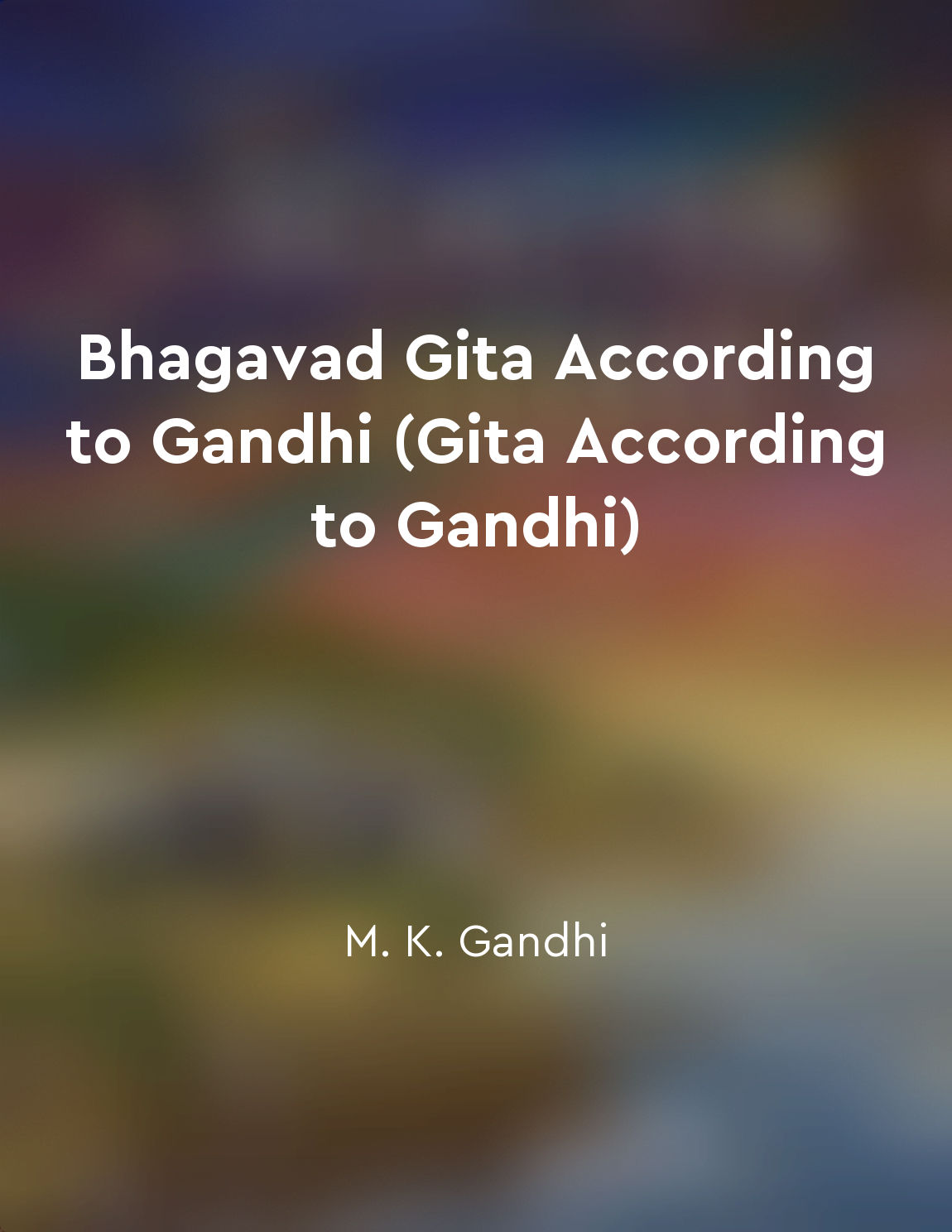Attaining liberation through selfrealization from "summary" of The Bhagwat Gita by R. R. Varma
The concept of attaining liberation through self-realization is a central theme in The Bhagwat Gita. It teaches us that true freedom comes from understanding our inner nature and realizing our true self. This kind of liberation is not dependent on external circumstances or material possessions, but rather on our ability to see beyond the illusions of the ego and connect with our higher self. Self-realization is the process of recognizing our true essence, which is beyond the physical body and the mind. It is about understanding that we are spiritual beings having a human experience, and that our true nature is pure consciousness. By delving deep within ourselves through meditation, introspection, and self-inquiry, we can uncover this eternal truth and experience a sense of inner peace and freedom. The path to self-realization is not easy, as it requires us to confront our fears, desires, and attachments. It involves letting go of our ego-driven self and surrendering to the divine will. Through self-discipline, self-awareness, and self-transformation, we can gradually peel away the layers of ignorance and illusion that veil our true self. Once we attain self-realization, we no longer identify with the transient aspects of our existence. We realize that we are not the body, the mind, or the emotions, but the eternal soul that is one with the universe. This realization brings a profound sense of liberation and joy, as we understand that we are free from the cycle of birth and death and that our true nature is eternal and unchanging.- The concept of attaining liberation through self-realization is a powerful teaching in The Bhagwat Gita. It reminds us that true freedom comes from knowing ourselves deeply and connecting with our higher self. By embarking on the journey of self-discovery and spiritual awakening, we can experience the ultimate liberation that transcends all limitations and leads us to the path of eternal bliss.
Similar Posts

Offering all actions to the Supreme
The real problem is the living being's forgetting his eternal relationship with the Supreme Lord. When a man revives his origin...

Role of the spiritual master
The spiritual master is the guide, the guru, who helps the disciple navigate the path of spiritual realization. The spiritual m...

Cultivate devotion towards the Supreme Being
Cultivating devotion towards the Supreme Being is a fundamental concept in the Bhagavad Gita. It is the idea of developing a de...

Surrender to the divine will
The concept of surrender to the divine will is a central theme in the Bhagavad Gita, as expounded by Lord Krishna to Arjuna on ...
Geeta stresses the importance of inner strength and resilience
The teachings of the Shrimad Bhagwat Geeta emphasize the significance of cultivating inner strength and resilience. Throughout ...
Meditation is a powerful tool in Hindu spiritual practice
Meditation holds a significant place in the spiritual practice of Hinduism. It is not merely a technique or exercise, but a pro...
One must fulfill their responsibilities without attachment to results
In the teachings of the Bhagavad Gita, Lord Krishna emphasizes the importance of fulfilling one's responsibilities without bein...
Control over senses emphasized
The Bhagwat Gita emphasizes the importance of controlling one's senses in order to achieve inner peace and spiritual growth. Th...

Liberation from material bondage
The concept of liberation from material bondage is a central theme in the Bhagavad-Gita. Material bondage refers to being entan...

